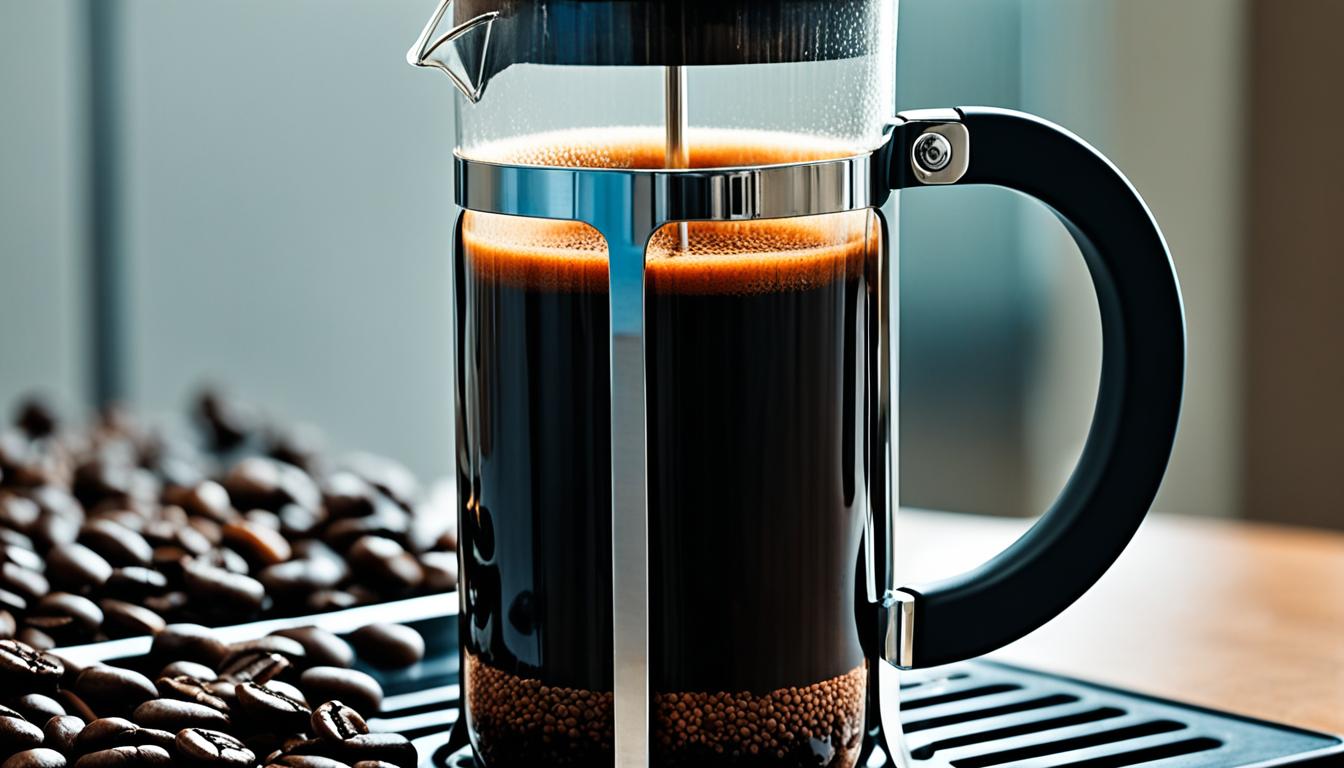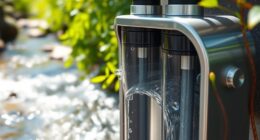To minimize sediment, regularly skim the water surface with fine nets or skimmers to remove floating debris and reduce cloudiness. Use high-quality filters like mesh screens or silt curtains at outlets or construction zones to trap small particles. Pour liquids slowly and steadily, using funnels or spouts for better flow control to prevent stirring up settled sediment. Employ barriers or sediment basins where needed. Mastering these techniques helps you keep water clear — discover more tips to improve your process.
Key Takeaways
- Regularly skim surface debris with fine nets or skimmers to prevent sediment mixing into water.
- Use high-quality filters like foam pads or mesh screens to trap fine sediment particles effectively.
- Pour liquids slowly and steadily using funnels or spouts to minimize agitation and sediment suspension.
- Implement sediment control devices such as silt curtains and barriers around construction zones for containment.
- Maintain proper site stabilization and employ sediment basins during large pouring operations to reduce runoff.

Have you ever wondered how to reduce sediment runoff effectively? Sediment control is vital for maintaining water clarity and protecting your environment. Whether you’re working on a construction site, managing a pond, or simply trying to keep your water feature clean, understanding the best techniques for minimizing sediment is essential. The key lies in proper skimming, filtering, and pouring practices that prevent sediment from clouding the water or settling where it shouldn’t.
Start by focusing on skimming. If you’re dealing with a pond or a small water body, regularly removing surface debris helps prevent loose sediment from mixing into the water column. Use a fine net or skimmer to gently lift floating particles and organic matter. This simple step reduces the amount of suspended sediment, which can quickly cloud water and diminish clarity. Consistent skimming prevents the accumulation of sediment on the surface, making it easier to control and reducing the overall sediment load in your water system.
Filtering is your next line of defense. Installing a high-quality filter system can trap fine particles before they spread throughout your water. When filtering, opt for materials like bio-balls, foam pads, or mesh screens designed to catch small sediment particles. If you’re pouring liquids or managing runoff, consider using sediment filters or silt curtains that can be placed at outlets or around construction zones. These barriers effectively trap sediment-laden water, preventing it from dispersing into surrounding areas and reducing the risk of water turbidity. Proper filtration ensures clearer water and minimizes the need for extensive cleanup later.
Pouring techniques also play a critical role in sediment control. When transferring liquids, do so slowly and steadily to avoid agitation, which can stir up settled sediment. If you’re pouring into a pond or container, use a funnel or spout to direct the flow precisely, reducing splashing and disturbance. For large-scale projects, controlling the flow rate during runoff discharge can greatly decrease sediment suspension. Employing temporary barriers or sediment basins during pouring operations can further prevent sediment from escaping into natural waterways or neighboring properties. These measures help maintain water clarity and prevent sediment from settling in undesired locations. Additionally, using proper site stabilization techniques during construction can significantly reduce sediment runoff from the source.
Frequently Asked Questions
What Are the Best Tools for Sediment Removal?
You should use a fine mesh skimmer or a sediment filter, especially for removing heavier or finer sediment types. A siphon or gravity-fed filter works well for larger sediment particles, while a pump-driven filter targets smaller particles. These tools help you efficiently remove sediment, improve water clarity, and prevent clogging. Choose your tools based on the sediment types you’re dealing with and the removal techniques suitable for your specific situation.
How Often Should I Clean My Filtration System?
You should clean your filtration system every 2 to 4 weeks, as regular filtration maintenance prevents sediment buildup from causing clogs or reducing efficiency. Coincidentally, neglecting this can lead to more frequent issues, making cleaning even more urgent. Keep an eye on the flow rate and clarity; if they decline, it’s time to clean. Staying consistent guarantees your system runs smoothly and sediment stays minimized.
Does Water Temperature Affect Sediment Settling?
Yes, water temperature impacts sediment settling because warmer water slows down sediment speed, making it settle more slowly. Cooler water, on the other hand, increases sediment speed, helping particles settle more quickly. If you’re managing sediment, consider temperature changes, as they can influence how efficiently sediment clears from your water. Adjusting temperature or timing your filtration accordingly can improve clarity and reduce sediment buildup over time.
Can Certain Plants Reduce Sediment in Water?
Yes, certain aquatic plants can help reduce sediment in water. Their roots stabilize the substrate, preventing erosion and sediment suspension. Aquatic plant benefits include natural sediment control methods by absorbing nutrients and trapping particles. By planting water-loving vegetation like reeds or water lilies, you promote clearer water and healthier ecosystems. These plants act as a natural barrier, reducing sediment disturbance and improving water quality without relying solely on mechanical methods.
What Are Common Mistakes When Pouring Water?
You might think pouring water is simple, but if you neglect water temperature and plant filtration, you’re inviting chaos. Common mistakes include pouring too quickly, which stirs up sediment, or at the wrong temperature, shocking your plants and disrupting filtration. Remember, a gentle, steady pour at the right temperature ensures your plants thrive and sediment stays minimized. Spoiler: rushing is the enemy of clear, healthy water.
Conclusion
By carefully skimming, filtering, and pouring, you can substantially reduce sediment in your brew. Some say that a perfectly clear pour is just a matter of technique, but others believe it’s about the quality of your ingredients. While there’s no one-size-fits-all solution, consistent practice and attention to detail will help you achieve a cleaner, more enjoyable drink. Trust your methods, experiment, and you’ll find the approach that works best for you.








